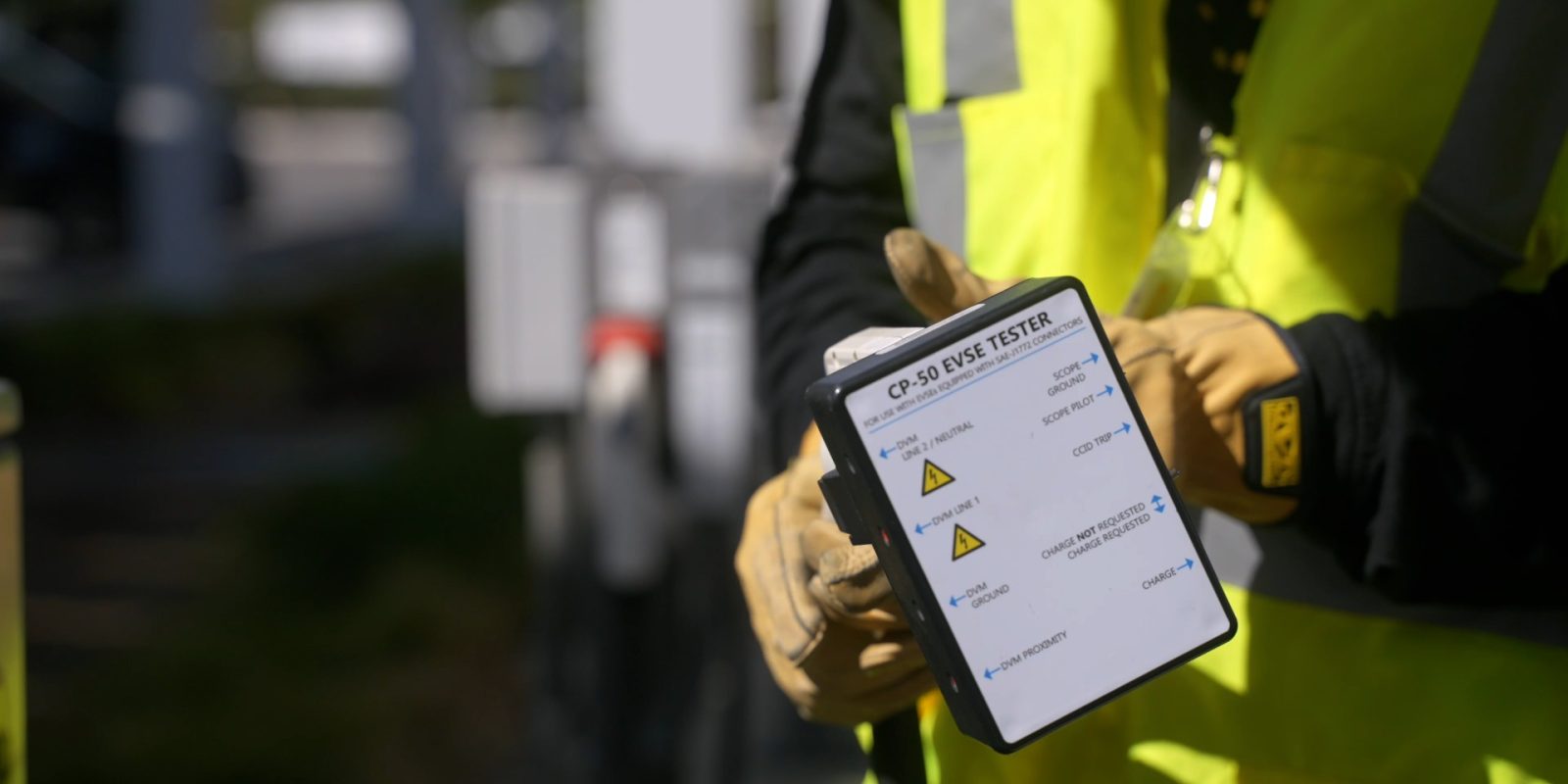
A new study did a deep dive into EV charger-reported uptime vs. actual uptime, how charger reliability varies, and how to improve it – here’s what was found.
EV charger-reported uptime vs. actual uptime
Los Angeles-based EV supply equipment (EVSE) O&M service provider ChargerHelp examined what’s causing reliability issues for EV public charging infrastructure. The findings are in a new report, “ChargerHelp Annual Reliability Report: The State of EV Charging and the Driver Experience,” which was reviewed and endorsed by Professor Gil Tal, director of the Electric Vehicle Research Center at UC Davis.
ChargerHelp collected public EV charging infrastructure data from its NEVI assessment and its direct EVSE O&M experience; third-party data from Paren; and public data from the US Department of Energy’s Alternative Fuels Data Center database. In total, the report analyzed more than 19 million individual data points.
The report explored three interrelated categories: the discrepancy between reported uptime and true uptime; how reliability varies by EV charging infrastructure’s age, state, and network; and what drives downtime and what it takes to improve uptime.
The study’s 6 primary findings
The study’s analysis revealed six primary findings:
True uptime is often lower than reported uptime. “True uptime” is when an EV driver is attempting to charge their EV on a port vs. a charging station or a network’s self-reported status via open charge point protocol, app, or software API. The analysis found that software consistently overestimates station uptime, point-in-time status, and the ability to successfully charge an EV.
Software inaccuracy compounds reliability shortcomings, reducing driver confidence. Software inaccuracies and charging station status overestimations — coupled with failed charges at stations that supposedly work — negatively impacted the EV charging experience at more than 26% of stations analyzed.
Older EV charging stations are more likely to be down. There is a positive correlation between EVSE infrastructure age and rates of down stations. Plus, states with a longer history of EV charging infrastructure buildout were also more likely to have higher percentages of down stations.
Charging reliability varies dramatically by network. The study looked at 20 charging network operators. Some have a near flawless record; others consistently experience 10-20% of stations down at any given point in time. Only four networks account for just over 25% of ports across the US, yet account for more than 75% of all down ports.
Downtime and failed charge sessions causes are multifaceted, but certain problems dominate. Charging stations had myriad types of observable signs of station damage and problems, ranging from cable and connector issues to cabinet and screen damage. Component failure or damage was the most common internal symptom found, followed by communications and/or software failures. Together they account for more than two-thirds of symptoms. Looking deeper at down stations only, the payment system condition had a strong positive correlation with working vs. down stations.
Addressing “problem” stations can alleviate a disproportionate burden on operations and maintenance. A small number of “problem stations” required four or more work orders to diagnose and resolve issues, placing a burden on O&M resources and dragging down station and network uptime and reliability metrics. During the second half of 2023, nearly half of DC fast charging stations experienced at least one significant outage, defined as a full, continuous week of downtime. However, 2% of stations experienced four or more outages — a cumulative month of downtime in the span of a six-month period. Worse, 10% of stations experienced extended outage durations lasting 6-9+ weeks.
5 recommended solutions
The study gives five recommendations to improve EV charger infrastructure reliability, boost uptime, and improve the charging experience for EV drivers:
- Ensure data accessibility
- Standardize data reporting protocols so uptime can be effectively measured
- Allocate O&M-specific funding to maintain and renew EV charging infrastructure
- Implement comprehensive warranty coverage paired with standardized troubleshooting protocols
- Promote industry-wide leading practices while expanding technician training and certification
Electrek’s Take
I spoke with Professor Gil Tal about ChargerHelp’s study, and he said a standout finding was that there’s a huge gap between what EV charging companies report, and what EV drivers see. He pointed out the on-the-ground problem of there being a large shortage of EV technicians that often have to cover large geographical areas, and that slows down repair time. Tal asserted, “If the [federal] NEVI Program holds [EV charging companies’] feet to the fire, then they will hire [an EV O&M] contractor that lives in the area.”
Tal offered a solution for fixing the true vs. reported uptime problem: “Install a whole lot more chargers.” If there are 100 chargers and 10 are down, versus four chargers and two are down, then the percentage isn’t really applicable for EV drivers – “it’s a game of numbers.”
Tal and I agreed that public EV charger reliability is a challenge, and in order to standardize the meaning of “uptime,” we need regulation to set an industry-wide, standardized definition of uptime, and long-term business models need to reflect that.
Let us know your thoughts about EV charger-reported uptime vs. actual uptime in the comments below.
If you live in an area that has frequent natural disaster events, and are interested in making your home more resilient to power outages, consider going solar and adding a battery storage system. To make sure you find a trusted, reliable solar installer near you that offers competitive pricing, check out EnergySage, a free service that makes it easy for you to go solar. They have hundreds of pre-vetted solar installers competing for your business, ensuring you get high quality solutions and save 20-30% compared to going it alone. Plus, it’s free to use and you won’t get sales calls until you select an installer and share your phone number with them.
Your personalized solar quotes are easy to compare online and you’ll get access to unbiased Energy Advisers to help you every step of the way. Get started here. –trusted affiliate link*
